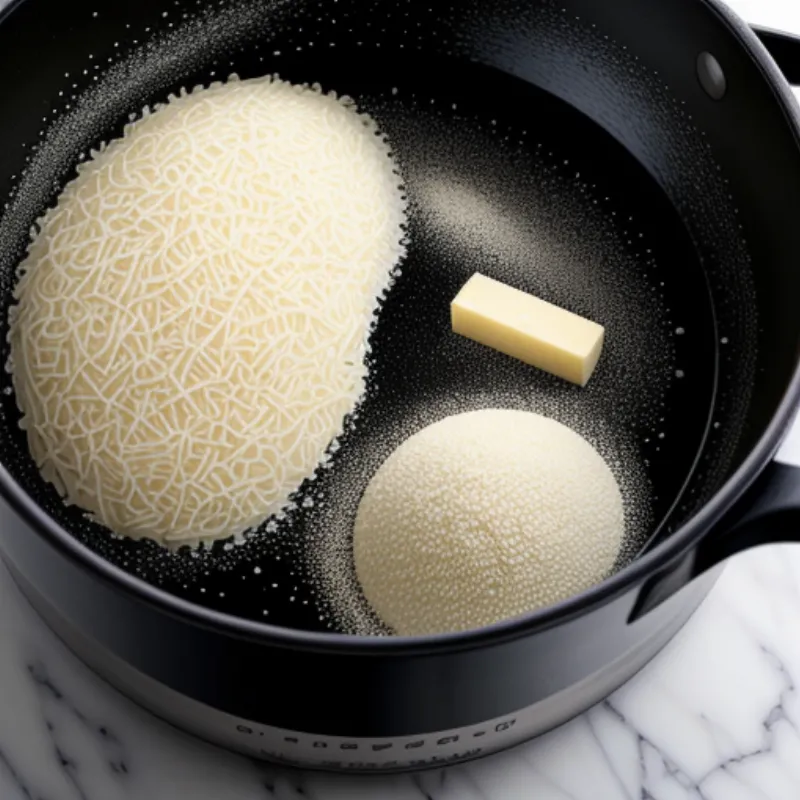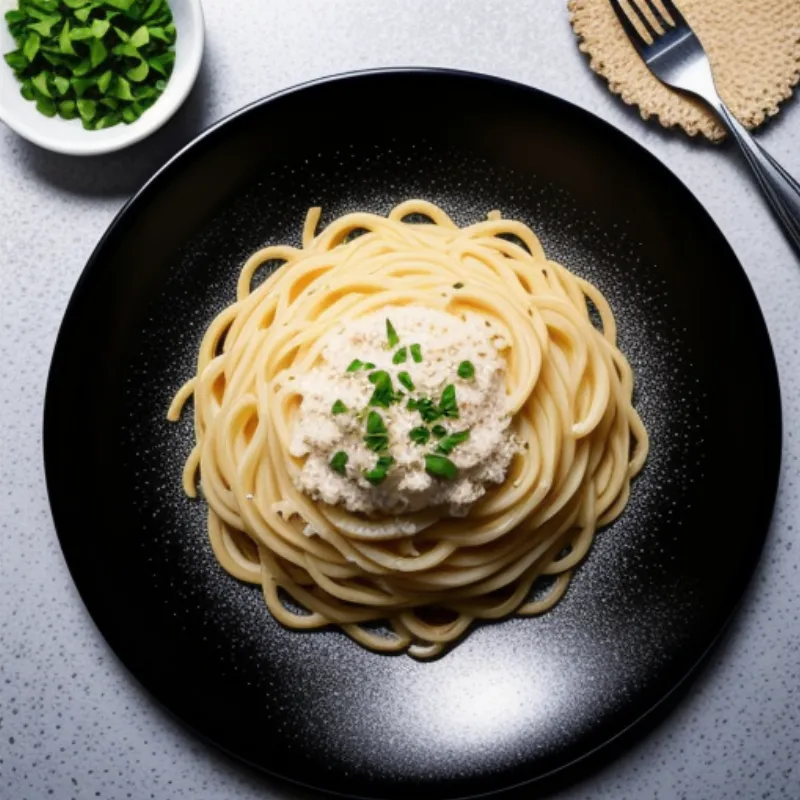Few dishes are as comforting and delicious as a perfectly executed Cacio e Pepe. This classic Roman pasta dish, whose name translates to “cheese and pepper,” is a testament to the beauty of simplicity. With just a handful of ingredients, you can create a creamy, cheesy sauce that will transport your taste buds straight to Italy. Whether you’re a seasoned chef or a kitchen novice, this comprehensive guide will equip you with everything you need to know to master the art of Cacio e Pepe sauce.
What is Cacio e Pepe Sauce?
Cacio e Pepe sauce is traditionally made with just three core ingredients: Pecorino Romano cheese, black pepper, and pasta water. The magic happens when starchy pasta water combines with grated Pecorino Romano, creating a silky emulsion that clings to every strand of pasta. A generous amount of freshly cracked black pepper adds a sharp bite that perfectly complements the richness of the cheese.
Why You’ll Love This Sauce
- It’s incredibly easy: Seriously, if you can boil water and grate cheese, you can make this sauce.
- It’s budget-friendly: You likely have most of the ingredients in your pantry already!
- It’s versatile: Cacio e Pepe sauce is traditionally served with pasta, but it’s delicious on so much more. Try it on roasted vegetables, pizza, or even eggs.
Gathering Your Ingredients
Main Ingredients:
- Pecorino Romano cheese: This hard, salty sheep’s milk cheese is the heart and soul of Cacio e Pepe. Don’t even think about substituting it! Look for a wedge of Pecorino Romano rather than pre-grated cheese for optimal flavor and texture. You’ll need about 1 1/2 cups grated.
- Freshly cracked black pepper: This is not the time to use that dusty old tin of peppercorns lurking in the back of your spice drawer. Freshly cracked black pepper provides a much more aromatic and flavorful punch. You’ll need about 2 tablespoons of coarsely ground pepper.
- Pasta water: This is the secret ingredient that transforms grated cheese into a smooth and creamy sauce. Be sure to reserve at least 1 cup of starchy pasta water before draining.
Optional Ingredients:
- Salt: To taste, but remember that Pecorino Romano is quite salty on its own.
- Unsalted butter: A tablespoon or two of butter added at the end can enhance the sauce’s richness and creaminess.
Equipment You’ll Need
- Large pot: For cooking the pasta.
- Grater: For grating the Pecorino Romano cheese. A box grater or a rotary cheese grater will work best.
- Pepper grinder: For freshly cracking the black pepper.
- Large bowl: For tossing the pasta with the sauce.
- Pasta tongs or a spider strainer: For transferring the cooked pasta to the bowl.
Let’s Make Some Cacio e Pepe Sauce!
- Cook the pasta: Cook your pasta of choice according to the package directions. Remember to reserve at least 1 cup of pasta water before draining.
- Grate the cheese: While the pasta is cooking, grate the Pecorino Romano cheese using a box grater or a rotary cheese grater.
- Grind the pepper: Coarsely grind the black pepper using a pepper grinder.
- Make the sauce: Add the ground black pepper to the bowl you’ll be using to toss the pasta. Gradually whisk in small amounts of the hot pasta water until the pepper is evenly moistened and forms a paste.
- Add the cheese: Once the pasta is cooked and drained, add it directly to the bowl with the pepper paste. Quickly add about half of the grated Pecorino Romano cheese and toss vigorously to combine. The heat from the pasta will melt the cheese and create a creamy sauce.
- Adjust the consistency: If the sauce seems too thick, add a little more pasta water, a tablespoon at a time, until you reach the desired consistency. If it’s too thin, add a touch more cheese.
- Season and serve: Taste and season with salt if needed. Serve immediately.
 Ingredients for Cacio e Pepe
Ingredients for Cacio e Pepe
Tips and Tricks for the Best Cacio e Pepe Sauce
- Use high-quality Pecorino Romano: The quality of your cheese will directly impact the flavor of your sauce, so don’t skimp!
- Don’t overcook the pasta: The pasta should be cooked al dente, or still slightly firm in the center. Overcooked pasta will result in a mushy sauce.
- Work quickly: Once you add the pasta to the cheese and pepper mixture, it’s important to work quickly to prevent the cheese from clumping.
- Don’t be afraid to experiment: Some people like to add a clove of garlic to the pasta water for a hint of flavor, while others prefer to finish their sauce with a knob of butter for extra richness. Feel free to experiment and make the recipe your own!
FAQs About Cacio e Pepe Sauce
Q: Can I use Parmesan cheese instead of Pecorino Romano?
A: While you can technically use Parmesan cheese in a pinch, it won’t have the same sharp, salty bite that makes Pecorino Romano so essential to this dish.
Q: My sauce is clumpy. What did I do wrong?
A: The most likely culprit is that you added the cheese too quickly or the pasta wasn’t hot enough to melt it properly. To fix this, try adding a little more hot pasta water and whisking vigorously to smooth out the sauce.
Q: Can I make Cacio e Pepe ahead of time?
A: Cacio e Pepe is best enjoyed immediately after it’s made. The sauce tends to thicken and lose its creaminess as it cools.
Serving Suggestions
Cacio e Pepe is traditionally served with tonnarelli or spaghetti, but it also pairs well with other pasta shapes like bucatini, pici, and even rigatoni.
Here are some serving ideas:
- Classic Cacio e Pepe: Serve with a simple green salad and crusty bread for soaking up the delicious sauce.
- Cacio e Pepe with a Twist: Add some sautéed mushrooms, crispy pancetta, or roasted cherry tomatoes to your pasta for a flavor boost.
- Cacio e Pepe Beyond Pasta: Try using the sauce as a topping for roasted vegetables, grilled chicken, or even pizza.
Storing Leftovers
If you have leftover sauce, it can be stored in an airtight container in the refrigerator for up to 2 days. Reheat gently over low heat with a little bit of pasta water to loosen the sauce.
 Close-up of a plate of Cacio e Pepe
Close-up of a plate of Cacio e Pepe
Conclusion
Cacio e Pepe is a testament to the fact that sometimes, the simplest dishes are the most satisfying. With just a few ingredients and a little bit of practice, you can create a restaurant-quality pasta dish that will impress your family and friends. So go ahead, grab your ingredients, and channel your inner Italian chef. You won’t regret it!
